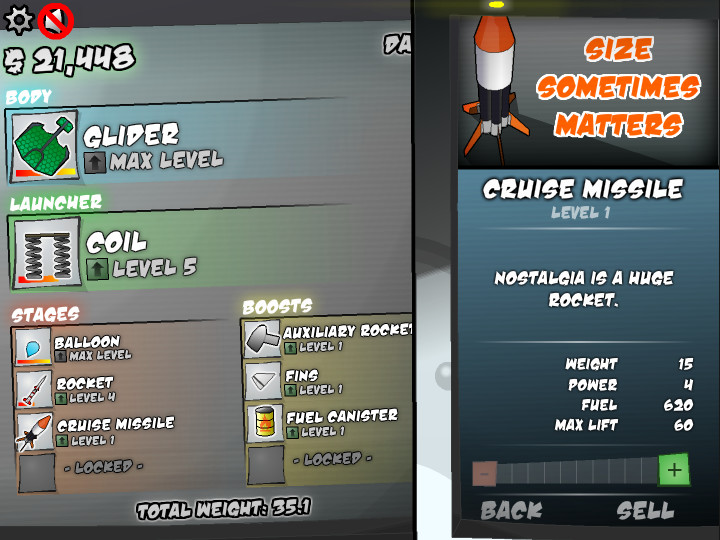The first step to getting started with Concourse is to install the fly CLI tool. You can download fly from any Concourse installation. There are download links for common platforms in the bottom right hand corner of the main page.
Throughout the Concourse documentation we'll stick to the long-form name of every command and flag. Once you've learned what the commands do, you may want to consult fly -h to learn the short forms.
Download Learn 2 Fly for Android to sequel to the highly-rated Flash game Learn to Fly, played over 30 million times. Private Pilot Learn To Fly Course Flight training has never been easier, thanks to Sporty’s Learn to Fly Course. It's everything you need to prepare for your written test and earn your pilot certificate, with ground school, test prep, and real-world training - all in one easy-to-use package.
Table of contents:- 1.3.1
fly login - 1.3.2
fly targets - 1.3.3
fly status - 1.3.4
fly userinfo - 1.3.5
fly logout - 1.3.6
fly edit-target - 1.3.7
fly delete-target - 1.3.8
fly sync - 1.3.9
fly completion
fly login
The first thing you'll want to do is authenticate with your target. This is done with the fly login command. This is also useful to save targets under a more convenient alias, so you don't have to type out the URL all the time:
The login command serves double duty: it authenticates with a given endpoint, and saves it under a more convenient name. The name and token are stored in ~/.flyrc (though you shouldn't really edit the file manually).

Concourse deployments can be occupied by multiple teams. To specify the team to which to log in, specify the --team-name or -n flag. If not specified, this defaults to the main team.
So, to log in to a team my-team an endpoint served at https://ci.example.com and save it as the more convenient name example, you would run:
The login command will see which authentication methods are available for the specified team and prompt you to choose one. For basic auth, it will ask your username and password and use them to acquire a token. For OAuth, it will give you a link to click, and after you've gone through the OAuth flow it will print an OAuth token on the page that you can then copy and paste into the prompt.
Note that if no authentication methods are configured, fly will acquire a token without any prompting. You can then use the alias like normal.
In any case, a token is saved in your ~/.flyrc, which will expire after one day.
If your Concourse uses SSL but does not have a certificate signed by a trusted CA, you can use the --ca-cert flag so that fly can trust the connection, like so:
This will read the value out of the file ./ca.crt and save it into ~/.flyrc so you don't have to pass it on every login invocation.
If your Concourse instance is protected by a proxy server requiring client certificates, you can use --client-cert and --client-key to point to where your certificate is stored. These paths will be stored in .flyrc and the certificate will by attached to every request made to that target.
After you've logged in you can use --target example (or -t example for short) to run a command against the saved target example. For example, fly -t example builds will list the last few builds on the example Concourse instance.
The -t flag is intentionally stateless and must be explicitly added to each command. This reduces the risk of accidentally running a command against the wrong environment when you have multiple targets defined.
fly targets
To see what targets are currently known to fly, run:
This will show each target's name, URL, and when its token expires.
fly status

To check your current authentication status with a given target, run:
This will let you know if the token has expired.
fly userinfo
To check what user you're logged in as, as well as which teams you are currently authenticated to and which roles within each team you have, run:
fly logout
To clear out your token for a given target, run:
To clear out your token for all targets, run:
Note: These two variations are mutually exclusive. If the target parameter -t and all parameter -a are both specified, an error will occur.
Learn To Fly 3 Mac
fly edit-target
To modify a target's name, team, or URL, run:
Each flag is optional - only the specified flags will be changed.
fly delete-target
When logging out just isn't enough, a target can be completely removed from ~/.flyrc by running:
To delete all targets, run:
Note: These two variations are mutually exclusive. If the target parameter -t and all parameter -a are both specified, an error will occur.
fly sync
Occasionally we add additional features to fly or make changes to the communication between it and Concourse's API server. To make sure you're running the latest and greatest version that works with the Concourse you are targeting we provide a command called sync that will update your local fly. It can be used like so:
The fly command will also warn you if it notices that your CLI version is out of sync with the server.
fly completion
Fly can output autocomplete configuration for some shells. For example, you can add an entry to your .bashrc like this:
or, using the /etc/bash_completion.d directory:
Note that, unlike other fly commands, this command does not interact with a remote server so you do not need to provide the -t or --target flag.
The first step to getting started with Concourse is to install the fly CLI tool. You can download fly from any Concourse installation. There are download links for common platforms in the bottom right hand corner of the main page.
Throughout the Concourse documentation we'll stick to the long-form name of every command and flag. Once you've learned what the commands do, you may want to consult fly -h to learn the short forms.
- 1.3.1
fly login - 1.3.2
fly targets - 1.3.3
fly status - 1.3.4
fly userinfo - 1.3.5
fly logout - 1.3.6
fly edit-target - 1.3.7
fly delete-target - 1.3.8
fly sync - 1.3.9
fly completion
fly login

The first thing you'll want to do is authenticate with your target. This is done with the fly login command. This is also useful to save targets under a more convenient alias, so you don't have to type out the URL all the time:
The login command serves double duty: it authenticates with a given endpoint, and saves it under a more convenient name. The name and token are stored in ~/.flyrc (though you shouldn't really edit the file manually).
Concourse deployments can be occupied by multiple teams. To specify the team to which to log in, specify the --team-name or -n flag. If not specified, this defaults to the main team.
So, to log in to a team my-team an endpoint served at https://ci.example.com and save it as the more convenient name example, you would run:
The login command will see which authentication methods are available for the specified team and prompt you to choose one. For basic auth, it will ask your username and password and use them to acquire a token. For OAuth, it will give you a link to click, and after you've gone through the OAuth flow it will print an OAuth token on the page that you can then copy and paste into the prompt.
Note that if no authentication methods are configured, fly will acquire a token without any prompting. You can then use the alias like normal.
In any case, a token is saved in your ~/.flyrc, which will expire after one day.
If your Concourse uses SSL but does not have a certificate signed by a trusted CA, you can use the --ca-cert flag so that fly can trust the connection, like so:
This will read the value out of the file ./ca.crt and save it into ~/.flyrc so you don't have to pass it on every login invocation.
If your Concourse instance is protected by a proxy server requiring client certificates, you can use --client-cert and --client-key to point to where your certificate is stored. These paths will be stored in .flyrc and the certificate will by attached to every request made to that target.
After you've logged in you can use --target example (or -t example for short) to run a command against the saved target example. For example, fly -t example builds will list the last few builds on the example Concourse instance.
The -t flag is intentionally stateless and must be explicitly added to each command. This reduces the risk of accidentally running a command against the wrong environment when you have multiple targets defined.
fly targets
To see what targets are currently known to fly, run:
This will show each target's name, URL, and when its token expires.
fly status
To check your current authentication status with a given target, run:
Learn To Fly 3 Mac
This will let you know if the token has expired.
fly userinfo
To check what user you're logged in as, as well as which teams you are currently authenticated to and which roles within each team you have, run:
fly logout
To clear out your token for a given target, run:

To clear out your token for all targets, run:
Note: These two variations are mutually exclusive. If the target parameter -t and all parameter -a are both specified, an error will occur.
fly edit-target
To modify a target's name, team, or URL, run:
Each flag is optional - only the specified flags will be changed.
fly delete-target
When logging out just isn't enough, a target can be completely removed from ~/.flyrc by running:
To delete all targets, run:
Note: These two variations are mutually exclusive. If the target parameter -t and all parameter -a are both specified, an error will occur.
fly sync
Occasionally we add additional features to fly or make changes to the communication between it and Concourse's API server. To make sure you're running the latest and greatest version that works with the Concourse you are targeting we provide a command called sync that will update your local fly. It can be used like so:
The fly command will also warn you if it notices that your CLI version is out of sync with the server.
fly completion
Fly can output autocomplete configuration for some shells. For example, you can add an entry to your .bashrc like this:
or, using the /etc/bash_completion.d directory:
Learn To Fly 3 Download Mac

Note that, unlike other fly commands, this command does not interact with a remote server so you do not need to provide the -t or --target flag.